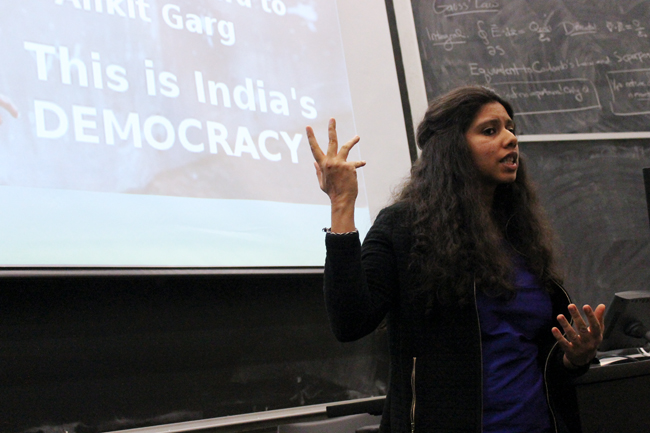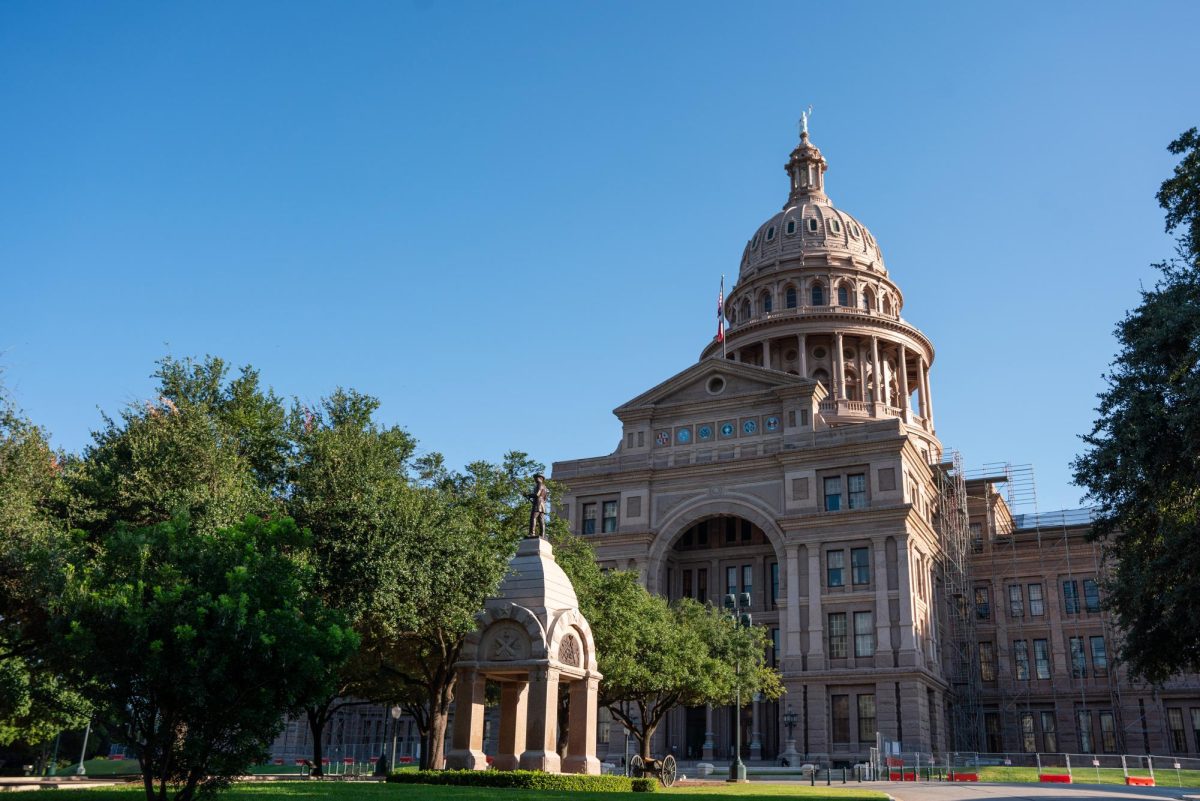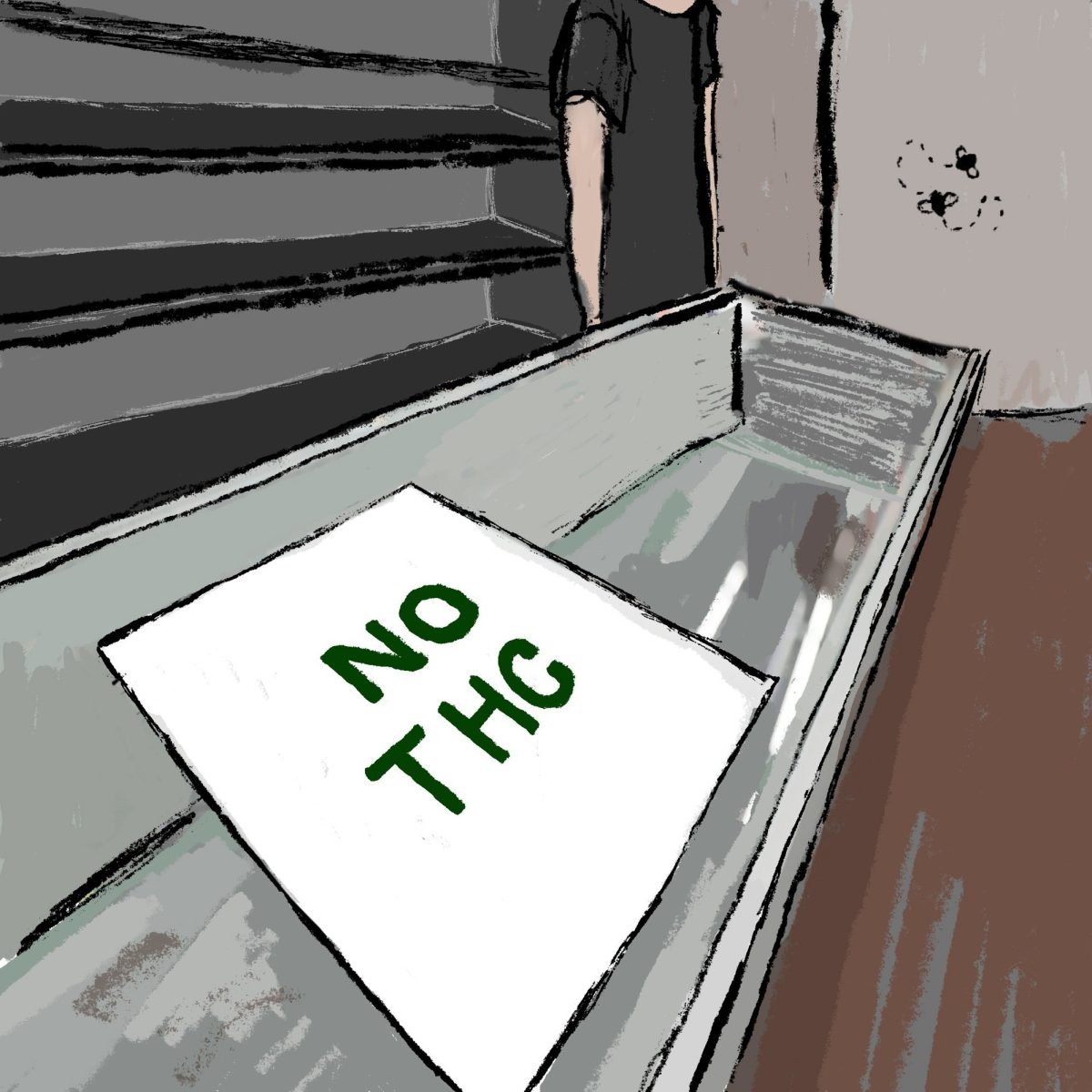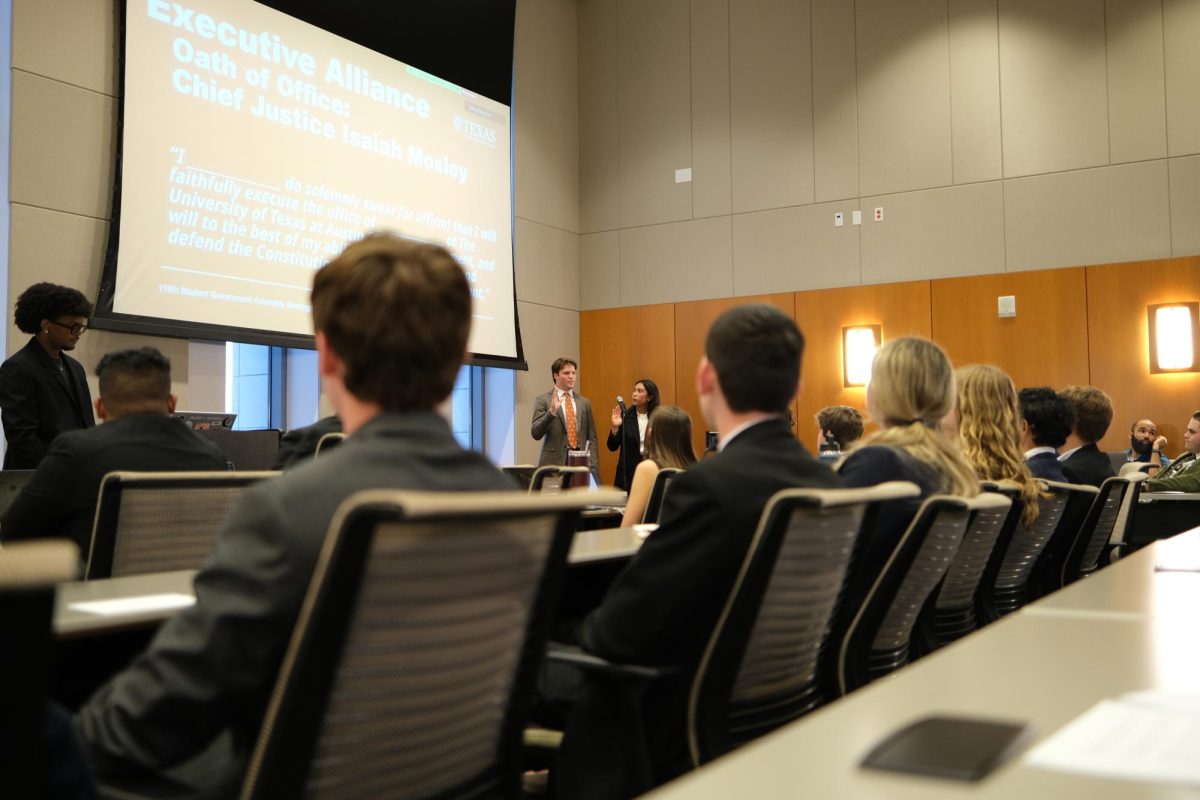The work of independent journalist Priyanka Borpujari involves exposing the malignity of what she calls the hidden civil war in India. At a talk hosted by the Association for India’s Development on Tuesday, Borpujari shared photos to draw attention to conflict between Indian government officials and an aboriginal Indian group known as the Adivasi.
Parvathy Prem, an aerospace engineering graduate student who helped organize the event on campus, said Borpujari’s reporting was a topic that overlapped with AID’s goal to listen to the voices of marginalized communities.
Borpujari’s photographs focused on a region in central and eastern India between the cities Hyderabad and Raipur.
“It is the area in which there is the most mineral wealth and indigenous populations,” Borpujari said. “It is also the region in where the fruits of democracy have not yet reached the people and where a system of violence is checked in by a paramilitary system.”
Borpujari said the Adivasi population is under constant threat by the government, and particularly Special Police Officers. She told stories of individuals who have been repeatedly raped and starved and have escaped oppression and execution.
“It’s a culture in which traditionally there is no word for rape,” Borpujari said. “You have situations in which women are having to keep quiet about the atrocities inflicted upon them.”
Borpujari said the government is involved in a violent conflict known as Operation Green Hunt against a segment of the Adivasi groups. She said she was fortunate enough to investigate a camp of the Central Reserve Police Force with her colleagues.
“When we arrived at the camp, [Central Reserve Police Force] camp officers were saying how grateful they are to be in their position,” Borpujari said. “However, once we got inside they told us the government has thrown them into this hell. We were immediately thrown out of the camp by a senior officer and as we were leaving, men were calling out to us to give our phone numbers so they could tell us the truth.”
On top of the violence and oppression, Borpujari said a type of malaria, called falciparum malaria, has plagued the country and is causing death in one out of three cases of the disease.
“In 2007, there were 144,000 cases of falciparum malaria in India,” Borpujari said. “That’s about 75 percent of the total number of malaria cases. The government released state figures of only three.”
Economics sophomore Shivani Butala said the talk made her more aware of the indigenous Adivasi in India.
“I can’t believe how inhumane they are being to these people,” Butala said. “These poor people can’t do anything about it and those of us who have rights need to take action for these people. Like she said inside, more people need to be aware so that a difference can be made.”














